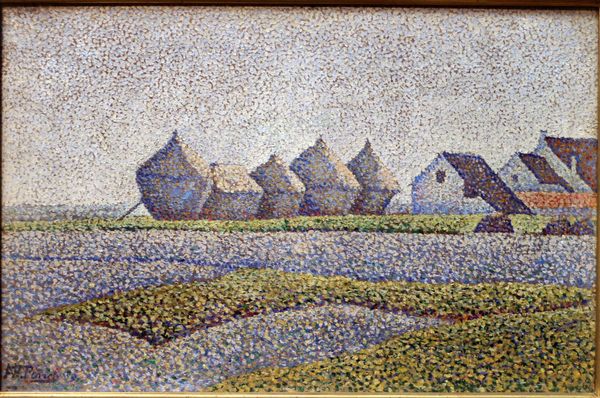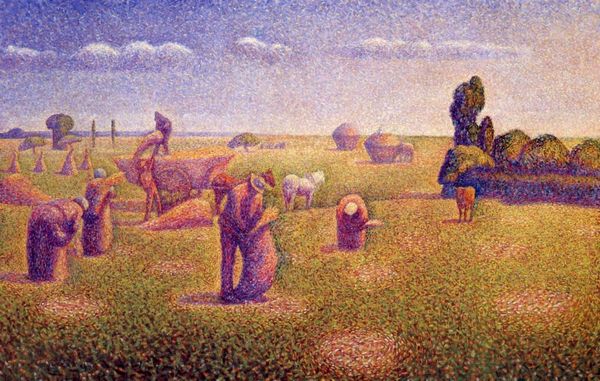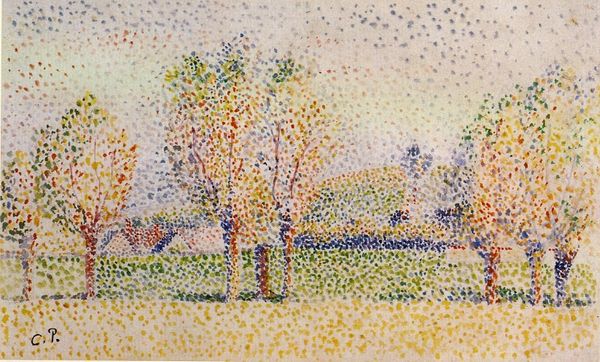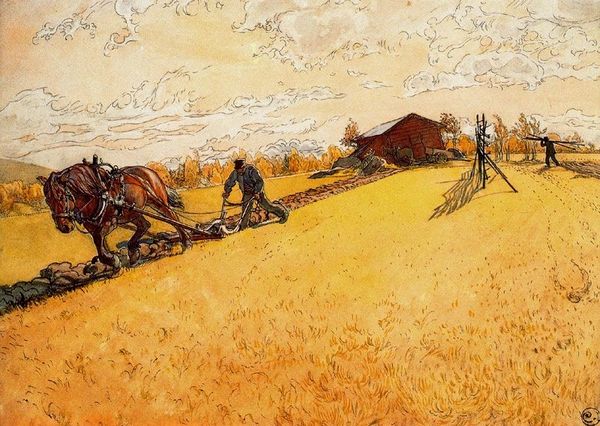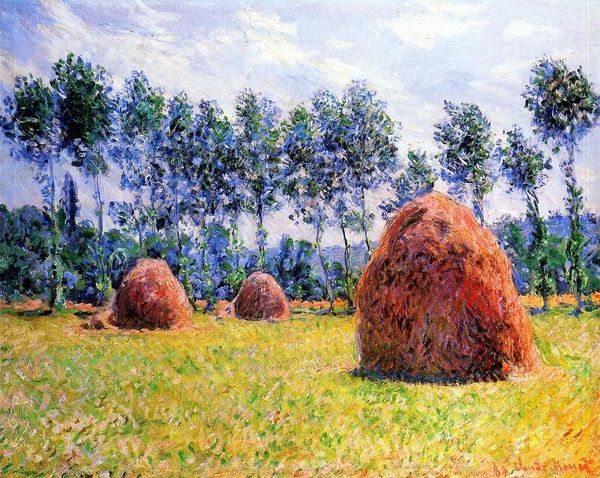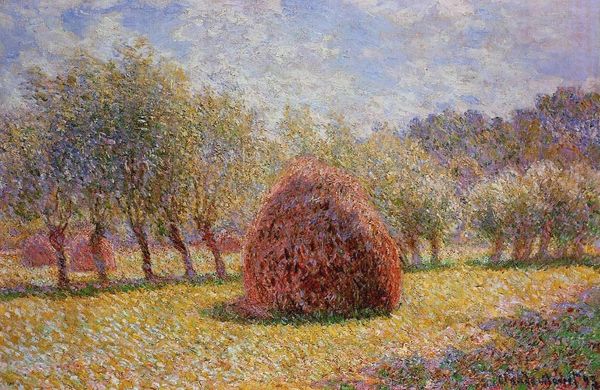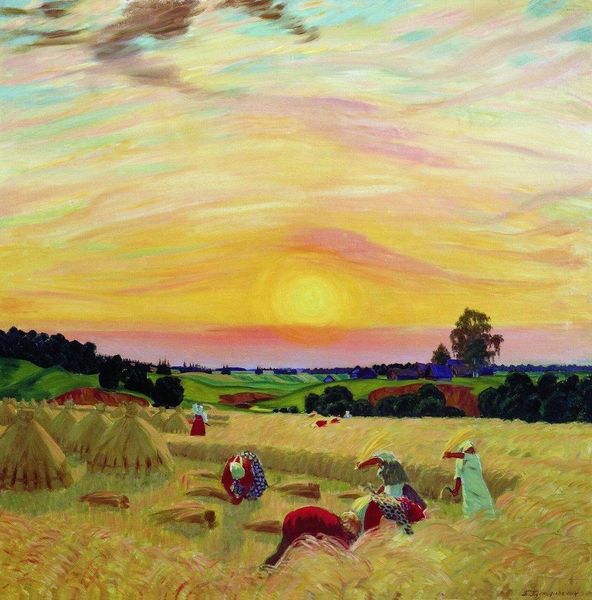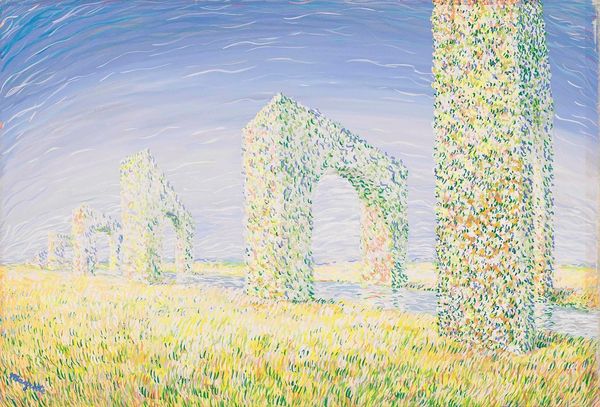
painting, plein-air
#
impressionist
#
painting
#
impressionism
#
plein-air
#
neo-impressionism
#
landscape
#
impressionist landscape
#
nature
#
geometric
#
naturalism
#
impressionist inspired
Copyright: Public domain
Editor: So, this is Charles Angrand's "The Harvest," painted around 1890. It appears to be done in a pointillist style, with lots of tiny dots of color. I’m struck by the sheer density of the composition and how it almost dissolves into pure color. What do you make of it? Curator: It’s fascinating how Angrand employs pointillism to explore the interplay of light and form. Observe how the stippled brushstrokes build not just color, but also volume. The haystacks, those conical forms, aren't merely represented; they are constructed through the meticulous application of pigment. Consider the artist's intent to use optical mixture rather than premixing paints; where do you perceive this being used to its greatest effect? Editor: Probably the sky! The gradient from darker to lighter is subtle, almost imperceptible, when you look closely. Are you suggesting that he wasn't necessarily trying to depict "harvest," but rather how our eyes perceive harvest? Curator: Precisely. Angrand is engaging with the core tenets of Neo-Impressionism—a scientific approach to color and perception. He breaks down the scene into its constituent parts, analyzing light and shadow and then reassembling it on the canvas to generate a specific sensation. Notice how this breaks away from conventional notions of artistic representation and verges on pure abstraction. Do you see geometric principles in its structure? Editor: Yes, the haystacks create an almost rhythmic pattern of triangles that contrast the dots of paint. Curator: Indeed. Angrand invites us to engage with painting not as a mirror reflecting reality, but as an independent construction built upon optical theory. It moves away from Romantic art! Editor: It's interesting to think about this painting less as a picture of a field and more as an experiment with color and form. Thanks! Curator: It's a powerful demonstration of how meticulous technique and theoretical engagement can transform a seemingly ordinary subject into a captivating exploration of perception itself.
Comments
No comments
Be the first to comment and join the conversation on the ultimate creative platform.
